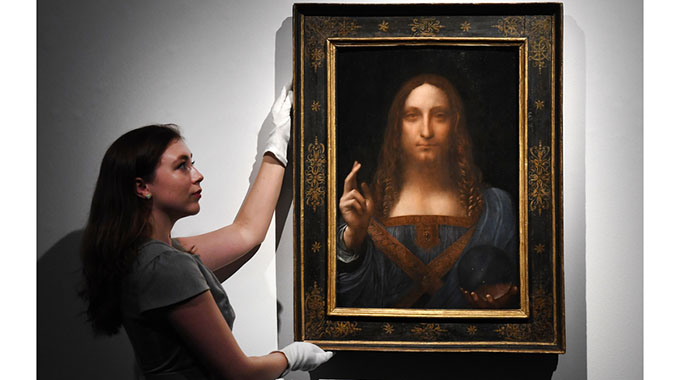Exploring the world of Art

Simon Tayengwa
There is an adage that says, “You should really start trying new foods, instead of eating the same thing all the time. Variety is the spice of life.”
Be that as it may man’s soul is bent on exploration and variety, but mundane standards and rigmaroles inevitably keep him under unfair confinement, with a handful of “lawbreakers” finding themselves notable places at the world’s table.
Art in general is so diverse and deep that it would be unjust to imply that all facets and genres have been traversed across to exhaustion, for what we know is only in the width and breadth of our limited scope.
This is buttressed by Hamlet in Shakespeare’s “Hamlet” when he says, “There are more things in heaven and earth, Horatio, than are dreamt of in your philosophy.” Therefore, learning becomes a lifetime process where in some cases one earns respective qualifications designed by mortals to maintain agreed upon standards, which in turn have limitations in themselves. Nature has lessons too.
However, standards keep us focused as we deal with issues in an orderly manner in order to further build upon what we already know in a systemic fashion.
It goes without saying that our society doesn’t appreciate visual art with the prodigious value it really deserves, especially making a juxtaposition with Western societies. What it simply means is: you can have a “Mona Lisa” painting by Leonardo da Vinci right in your backyard and nobody will care a hoot. If thieves are to intrude your property they would rather steal scrap metal than the painting.
It doesn’t have significance let alone value. Is it culture or mentality that gives value to pieces of art? Whether the question is here or there, the question remains, staring at us in the face. Maybe art doesn’t have a place in the basic needs of a relatively poor society to which most of us belong.
A steadfast gaze on the arena of visual art; there are names synonymous with its creation and existence so to speak without which one would never authenticate the mere word, art.
A layman would think, had it not been for Rembrandt, Da Vinci, Michelangelo, Picasso or every other towering name the inception of art could have drastically been thwarted. Far be it that the aforementioned names moulded and exhaled a content of oxygen into a non-existent genre, but only upheld an already existing one.

Monalisa
Nonetheless, the impact of these gurus can’t be brushed aside by any sane person because the ripple effect so realised has held the known world in mind blasting awe. It is quite surprising that these names have not only stood the test of time, but have also surpassed the significance of political, economic, and social existence of their day. Should their contemporaries be of any relevance, it is upon certain attachment to these lofty paragons of success.
“Salvator Mundi”, a painting by Leonardo Da Vinci was sold for a staggering $450 million at an auction in 2017 to a Saudi prince, one or two years later the painting is already missing much to the prince’s economic harm though he has neutralized the sting by his equanimity. That much for a painting? That’s not a joke, I could use such a hefty figure to purchase a whole street of villas in Dubai or just other goods of ostentation, instead of a single piece that could disappear in two shakes of a lamb’s tail while taking coffee. A simple mind would call it money down the drain to purchase a portable piece of art to hang on the wall.
The man whose hands created the much coveted “Salvator Mundi”, is famously known for the timeless masterpiece, “Mona Lisa”, a painting that has irresistibly attracted the eyes of a motley crowd whose tongues would continually harp on the title like a serenade.
On July 15, 1606, the Dutch community welcomed the arrival of a baby boy, Rembrandt Van Rijn by name. Little did anybody know that a legend had set his feet upon the Dutch soil; a man who would overwhelm and catch by surprise the art fraternity with his fast and furious brush strokes. He who would shatter the comprehension of mankind by his plethora of portraits, over 90, all successively gesticulating the physical appearance of a waning legend, yet hollering the exuberance of a relentless inward fighter.
Needless to say, the misfortunes that took a toll on his persona, the chiaroscuro maestro stayed afloat outdoing the dark forces in their own game to become a force to reckon with for the ensuing centuries in a row. His mantra was, “a painting is finished only when it has the shadows of a god.”
Rembrandt also reigned supreme as a draughtsman and printmaker. Though he has about 10 famous paintings, the anatomy lesson of “Dr Nicolaes Tulp: 1632”, has the most striking subject matter given the fact that Rembrandt was not a man of books.
Art has been with us here in Africa since time immemorial, the rock paintings testify our forefathers’ inherent spirit of skill and a strong desire to relay a message to the coming generations.
Our posterity will have a taste of our history through art and they will blot, appreciate, make amends and ameliorate their own part of history for sustainability if sanity is to prevail.








Comments